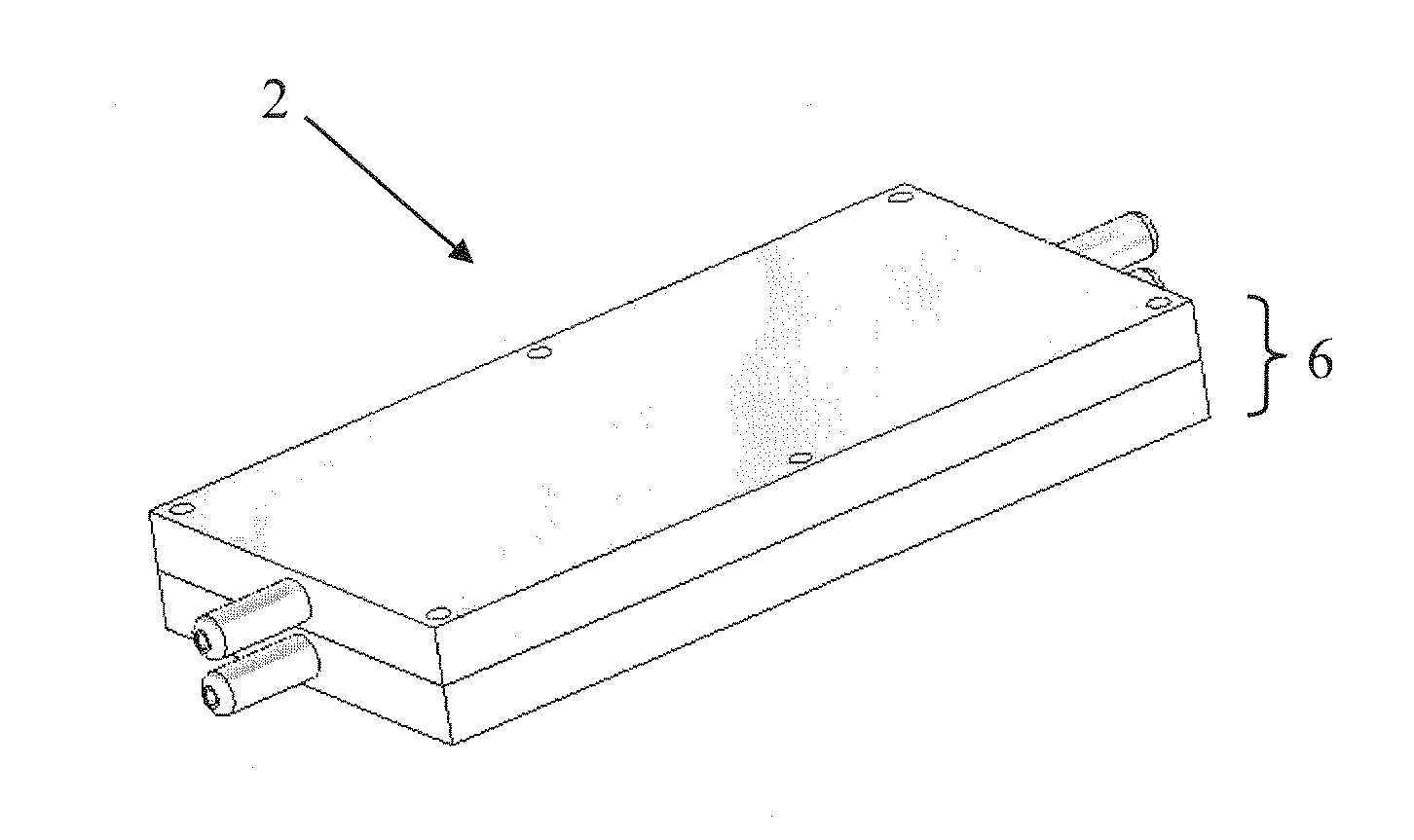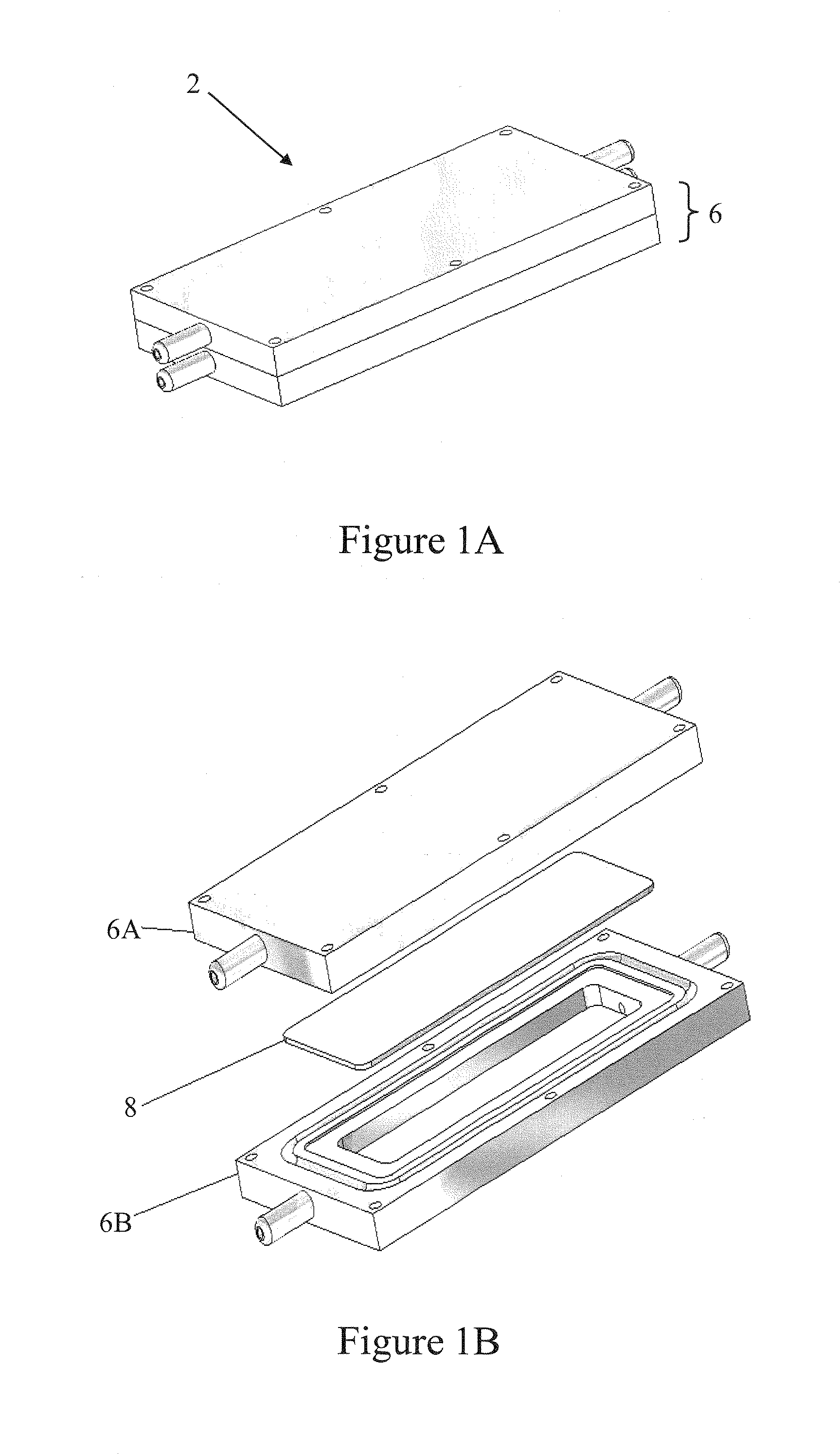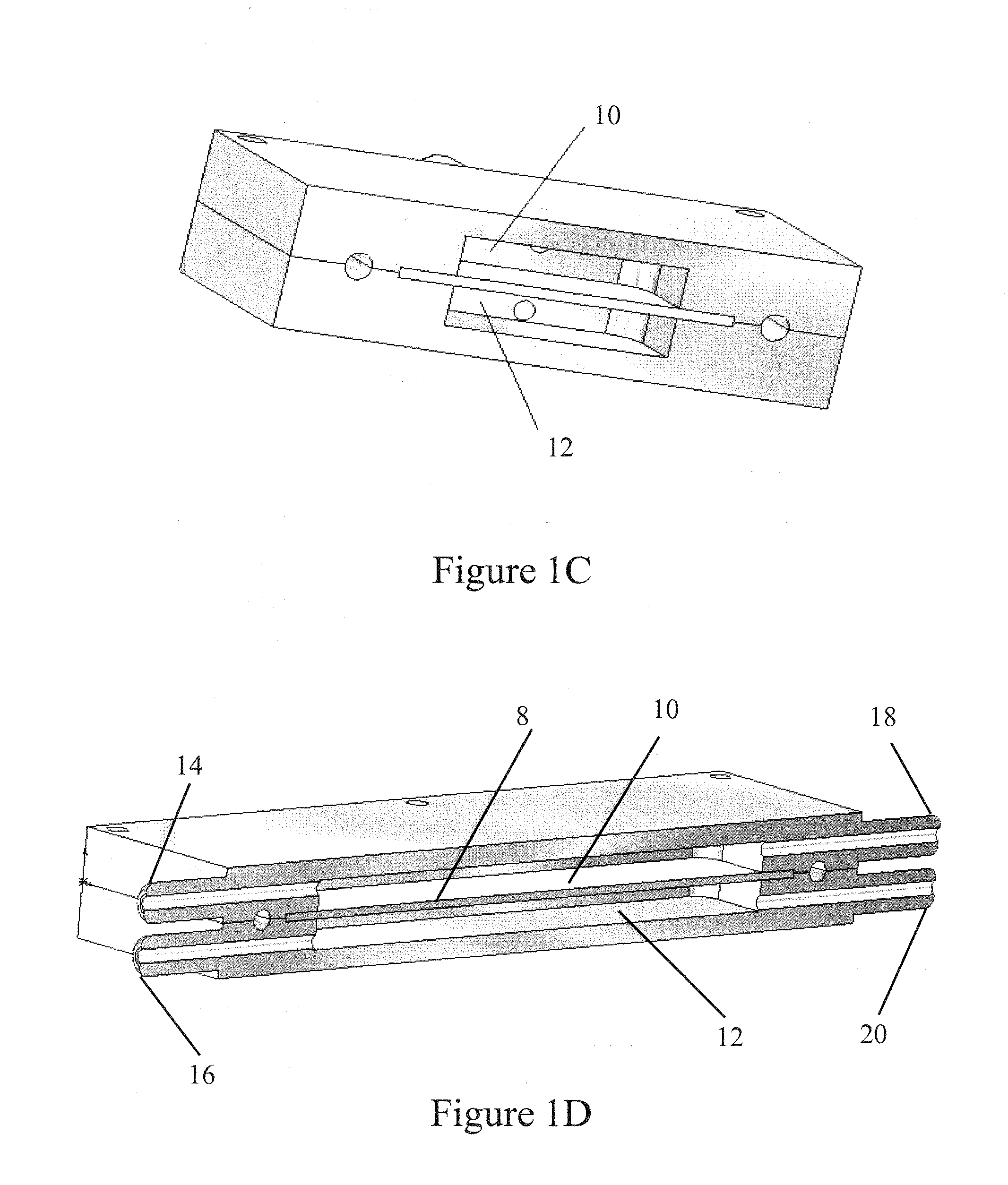Perfusion bioreactors, cell culture systems, and methods for production of cells and cell-derived products
a technology of perfusion bioreactors and cell culture systems, applied in the field of perfusion bioreactors, cell culture systems, and methods for producing cells and cell-derived products, can solve the problems of high labor intensity, high cost, errors and contamination, etc., and achieves the effect of facilitating direct application to therapies, preventing cross-contamination, and reducing the need for skilled technicians
- Summary
- Abstract
- Description
- Claims
- Application Information
AI Technical Summary
Benefits of technology
Problems solved by technology
Method used
Image
Examples
Embodiment Construction
[0032]The present invention provides bioreactors 2, automated cell culture systems, and methods for production of cells and cell-derived products. Cells grown using the bioreactors of the invention can be used to rebuild damaged tissue or organs. Potential applications following trauma or injury are numerous, such as for the production of autologous skin for burn repair, growth of bone for fracture repair, and / or the production of tissue for plastic reconstruction of severe injuries.
[0033]A plurality of bioreactors 2 of the invention can be run in parallel from a single media source or multiple sources. In one embodiment, three or more bioreactor units 2 are run in parallel from a single media source.
[0034]In some embodiments, each bioreactor 2 has a chamber 10, 12 grooved into the housing 6 to hold the cell substrate material 8 (referred to herein as the “matrix”, “cell matrix”, “cell growth matrix”, or “cell substrate matrix”). Any porous material capable of supporting growth of t...
PUM
| Property | Measurement | Unit |
|---|---|---|
| length | aaaaa | aaaaa |
| thickness | aaaaa | aaaaa |
| fiber density | aaaaa | aaaaa |
Abstract
Description
Claims
Application Information
 Login to View More
Login to View More - R&D
- Intellectual Property
- Life Sciences
- Materials
- Tech Scout
- Unparalleled Data Quality
- Higher Quality Content
- 60% Fewer Hallucinations
Browse by: Latest US Patents, China's latest patents, Technical Efficacy Thesaurus, Application Domain, Technology Topic, Popular Technical Reports.
© 2025 PatSnap. All rights reserved.Legal|Privacy policy|Modern Slavery Act Transparency Statement|Sitemap|About US| Contact US: help@patsnap.com



